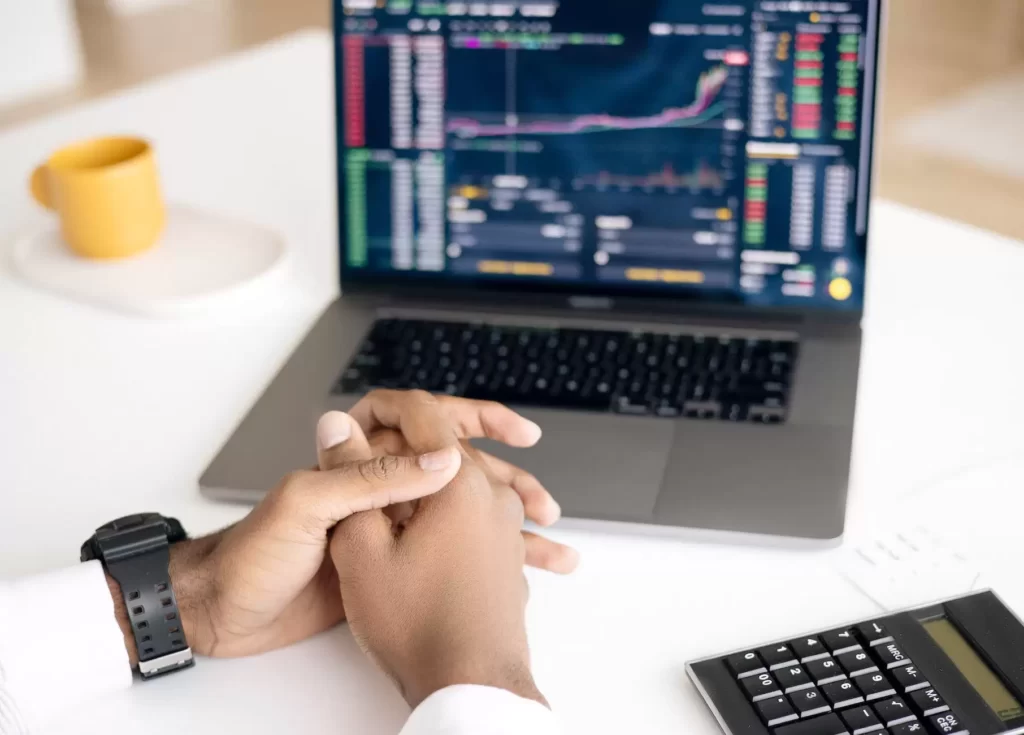
Introduction
The world of finance has changed dramatically over the past few decades, with the advent of technology and the internet profoundly impacting the way we trade and invest. One of the most significant developments in this area is the rise of algorithmic trading and the use of advanced trading systems.
In this blog post, we will delve into the fascinating world of algorithmic trading, explore various types of trading systems, and discuss their benefits and potential risks.
What is Algorithmic Trading?
Algorithmic trading, also known as algo trading or automated trading, is a method of executing orders using pre-programmed trading instructions that take into account various factors such as time, price, and volume.
These algorithms are designed to make trading decisions with little or no human intervention, allowing for faster execution, reduced costs, and improved consistency.
Traders and investors can use algorithmic trading strategies to execute a wide range of orders, from simple limit orders to complex strategies that involve multiple assets and sophisticated risk-management techniques.
Algorithmic trading is now widely used by institutional investors, hedge funds, and even individual traders, thanks to the availability of advanced trading platforms and tools.
Types of Trading Systems
There are numerous types of algorithmic trading systems, each designed to suit different trading styles and objectives.
Some of the most common trading systems include:
Trend-Following Systems
Trend-following systems aim to capitalize on existing market trends by buying when prices are rising and selling when they are falling.
These systems typically use technical analysis tools like moving averages, trendlines, and momentum indicators to identify and follow trends.
Mean Reversion Systems
Mean reversion systems are based on the premise that prices tend to revert to their historical averages over time.
Traders using these systems seek to capitalize on temporary price deviations by buying when prices are below their average and selling when they are above it.
Common tools used in mean reversion systems include Bollinger Bands, RSI, and standard deviation.
Scalping Systems
Scalping systems involve making numerous small trades throughout the day to capitalize on short-term price fluctuations.
These systems typically focus on liquid assets, such as major currency pairs or large-cap stocks, and rely on tight risk management and fast execution to be successful.
High-Frequency Trading (HFT) Systems
High-frequency trading (HFT) systems use advanced technology and algorithms to execute a large number of orders in fractions of a second.
These systems are designed to take advantage of minuscule price discrepancies and market inefficiencies, making profits from tiny price movements.
HFT has been a controversial topic due to its potential impact on market stability and fairness.
Benefits of Algorithmic Trading Systems
Algorithmic trading systems offer several advantages over traditional manual trading, including:
- Speed and Efficiency: Algorithms can execute trades faster and more efficiently than humans, reducing the time it takes to capitalize on profitable opportunities.
- Reduced Emotional Bias: Algorithmic trading systems follow pre-defined rules, eliminating the emotional biases that can lead to poor decision-making.
- Cost Savings: Automating the trading process can lead to cost savings through reduced commissions and more efficient execution.
- Diversification: Algorithmic trading systems can trade multiple assets simultaneously, allowing for better diversification and risk management.
Challenges and Risks of Algorithmic Trading
Despite its numerous benefits, algorithmic trading also comes with its own set of challenges and risks, such as:
- Technical Issues: Trading systems rely on technology and can be prone to glitches, connectivity issues, and other technical problems that could impact performance.
- Over-Optimization: The process of fine-tuning algorithms to achieve the best possible performance can lead to over-optimization, making the system less adaptable to changing market conditions.
- Regulatory Risks: The
growing prevalence of algorithmic trading has led to new regulatory risks, including the possibility of systems causing destabilizing market events like flash crashes. Regulations need to keep up with innovations to ensure stability while allowing for progress. - Predictability: Once an algorithmic trading strategy proves successful, there is an incentive for others to adopt the same strategy. This can make the strategy less effective over time as it becomes more widely used and predictable.
- Lack of Human Judgment: While algorithmic trading reduces emotional bias, it also lacks the human judgment that comes from experience. Humans are still needed to design, develop, and monitor these systems.
- Transition Challenges: Migrating from a manual trading process to an automated algorithmic approach can pose significant challenges, including integrating new technology, retraining staff, and ensuring a smooth transition with minimal impact on business operations.
Conclusion
In summary, algorithmic trading and the use of advanced trading systems have revolutionized the financial world by enabling faster, more efficient and optimized trading.
Though the growth of algorithmic trading also introduces new risks that must be managed effectively, the potential benefits in terms of cost savings, speed, diversification and reduced bias are substantial.
For investors and traders, the key is developing a balanced perspective on algorithmic trading that harnesses the power of technology while still relying on human judgment and experience.
With close monitoring and careful management, algorithmic trading systems can be tailored to complement human traders rather than replace them entirely.
The future of finance will likely depend on this kind of symbiotic relationship between humans and machines.







